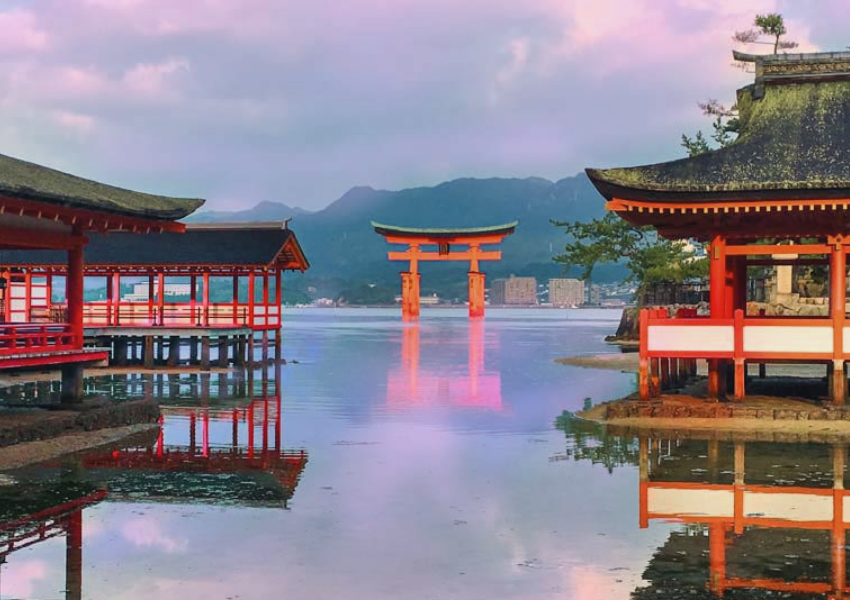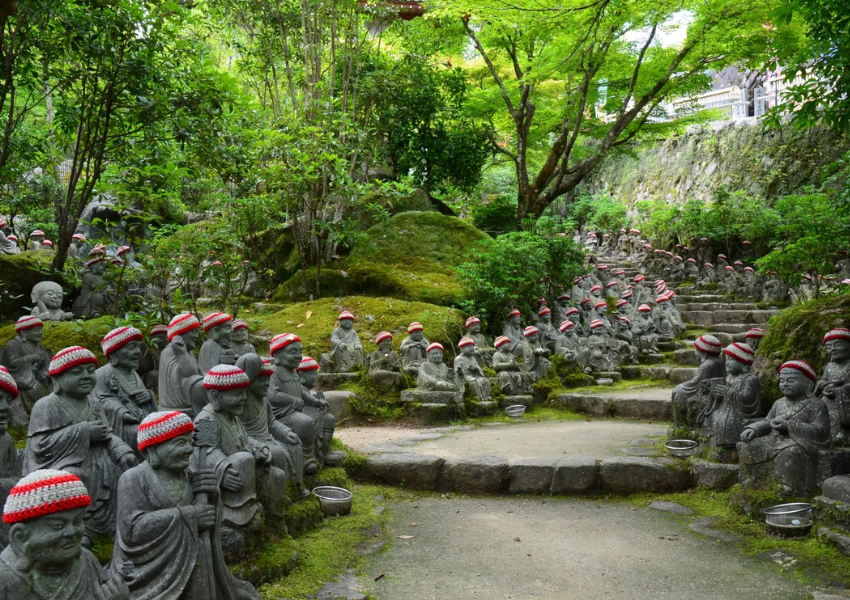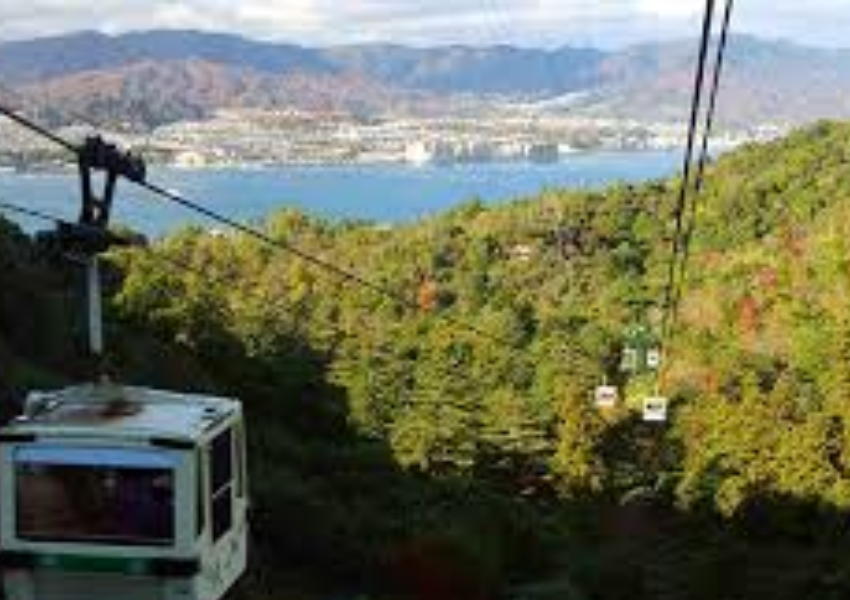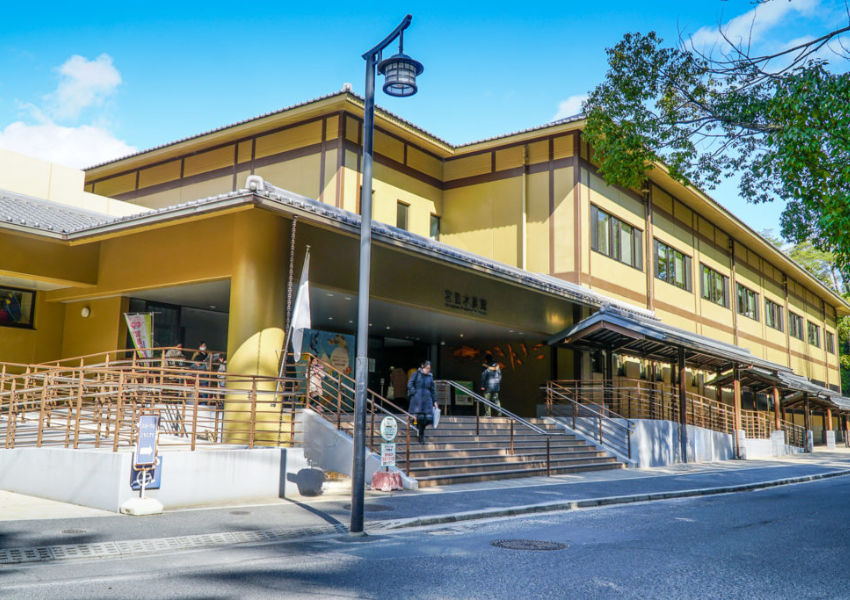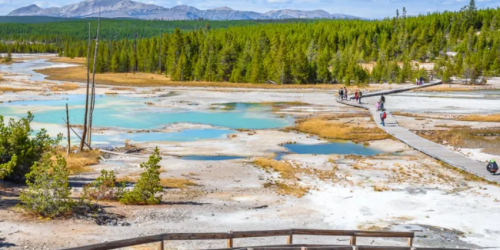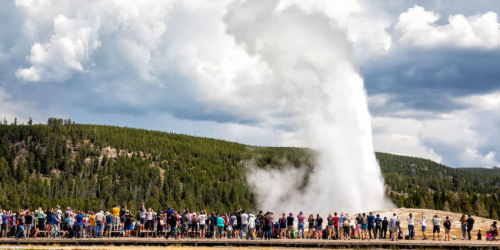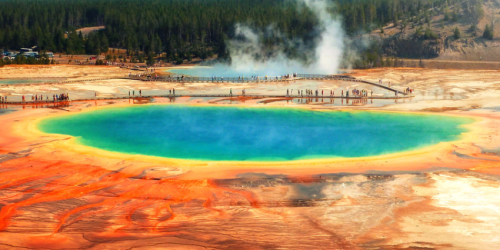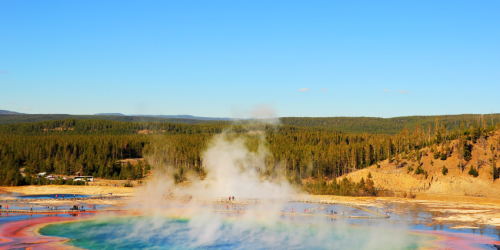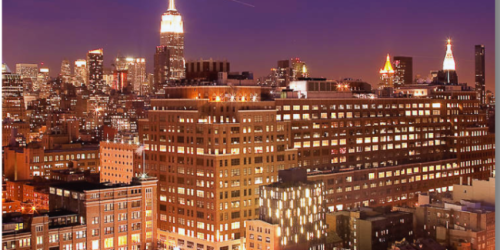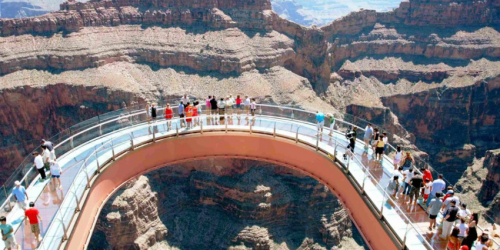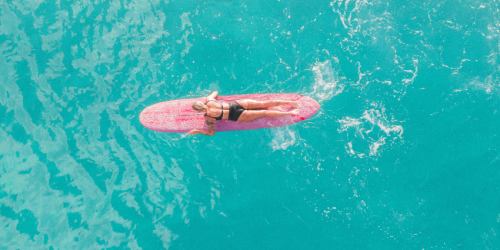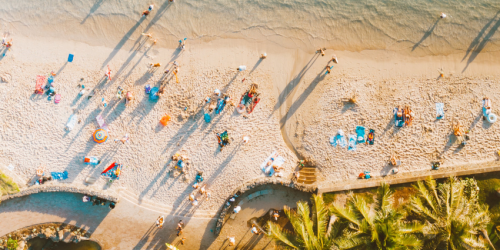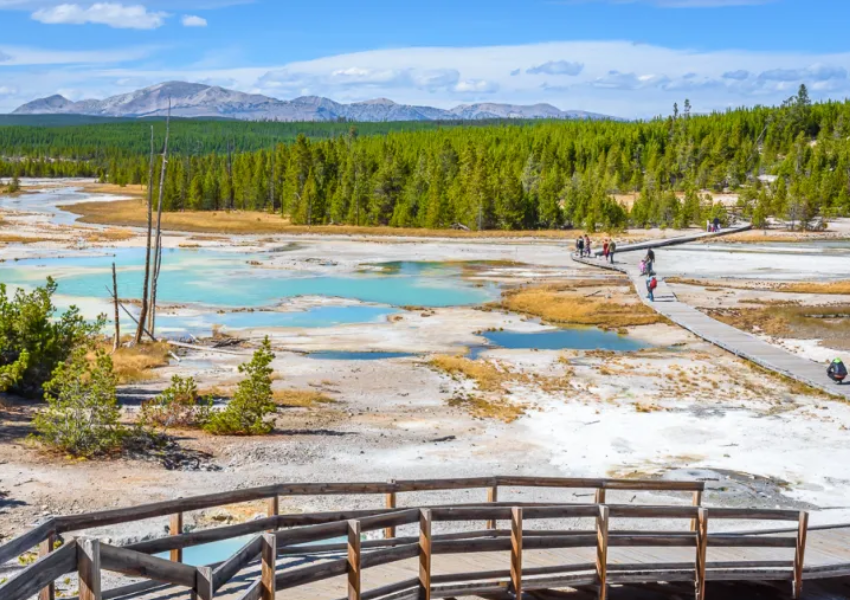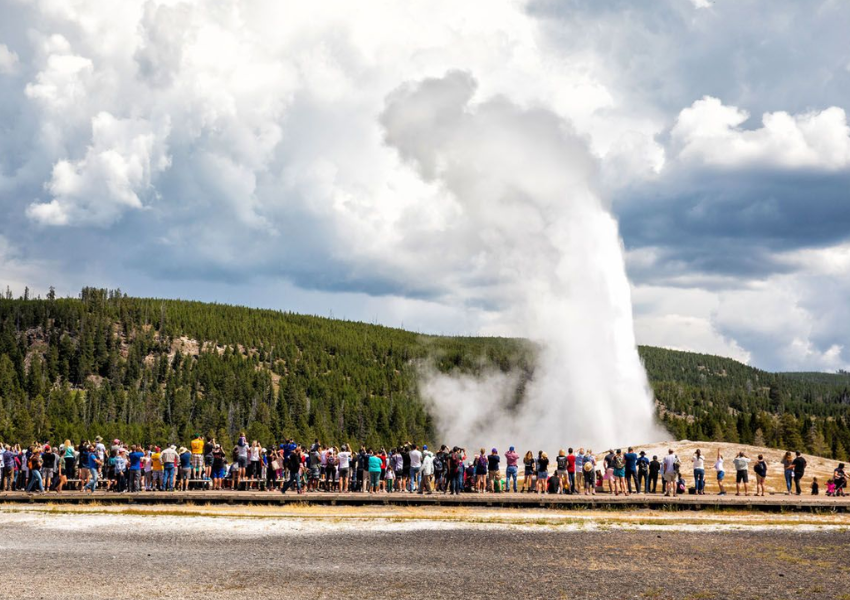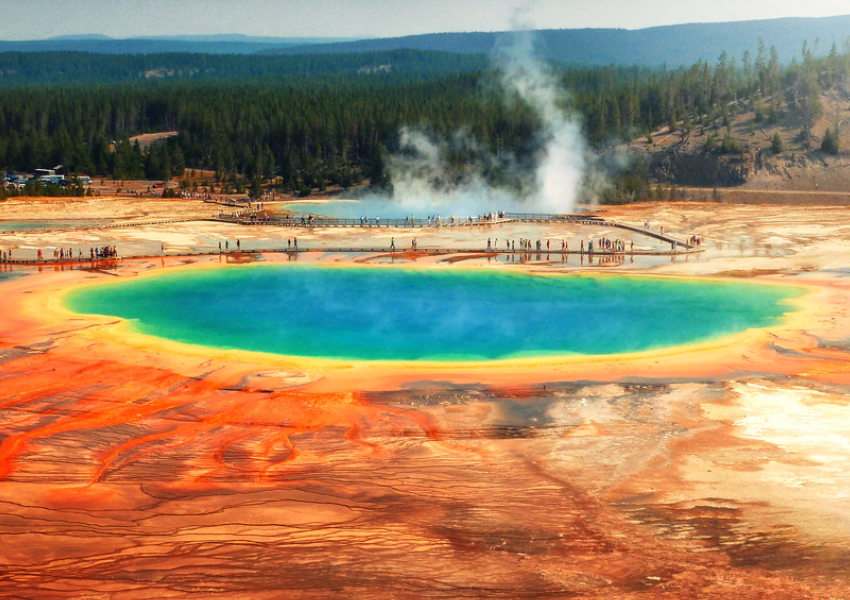Itsukushima Shrine (厳島神社, Itsukushima Jinja) is a Shinto shrine located on the island of Itsukushima (popularly known as Miyajima). The shrine is known worldwide for its iconic “floating” torii gate. It was inscribed as a World Heritage Site in 1996.
Miyajima Island has a long history as a holy site of Shinto. The island’s highest peak, Mount Misen with friendly wild deer that roam the streets. This island’s worshiped by local people as early as the 6th century. In 1168, Taira no Kiyomori selected the island as the site of his clan’s family shrine and built Itsukushima Shrine.
Table of Contents
ToggleExplore the Mysterious Shrine on the Water
The shrine has been rebuilt several times over the centuries due to damage from natural disasters and fires. Its current form dates to the 16th century during the Momoyama period.
The shrine and its torii gate’re unique for being built over the water on stilts, seemingly floating in the water during high tide. This architectural design is a prime example of the Japanese aesthetic principle of “shin-zen-bi” (神前美), which means “beauty in front of the gods.” The shrine on the water showing the prosperity of the Taira clan.
The shrine consists of seventeen buildings and three other structures, creating two shrine complexes. One’s called the Honsha complex, which is the main shrine, and the other is the Sessha Marodo-jinja complex. Surrounding these structures are ancillary buildings and a forested area around Mt. Misen. Connecting them all are beautiful boardwalks, elevated by pillars above the sea. In front of the Main Shrine, there’s a high stage, renowned as one of Japan’s ‘three big stages’, alongside the stone stage at Shitenno-ji Temple and Sumiyoshi Grand Shrine in Osaka.
The Main Shrine connected by beautiful corridors to the Marodo Shrine, Tenjin Shrine and the Noh theatre stage are all in perfect balance with the nature surrounding it. Dedicated to three esteemed female deities – Ichikishima-hime-no-mikoto, Tagori-hime-no-mikoto, and Tagitsu-hime-no-mikoto – the Main Shrine embodies tranquility and reverence amidst the beauty of nature.
At high tide, the Torii gate and shrine float elegantly on the water, a captivating sight. But during low tide, visitors can walk up to the gate’s base, marveling at its sheer size. The massive trunks reveal their true thickness up close. Additionally, at low tide, three enchanting ‘mirror ponds’ appear in the sand nearby, enhancing the magical ambiance of the surroundings.
Secrets of the Torii gate
The shrine’s located in a small inlet, while the torii gate’s set out in the Seto Inland Sea. The Torii gate, Located 200 meters away from Itsukushima’s Main Shrine, has seen its fair share of renovations over the years since the era of Taira-no-Kiyomori.
Standing tall at 16 meters and weighing a whopping 60 tons, the O-Torii gate is truly a marvel. What’s even more surprising is that its six pillars aren’t buried in the seabed like you might expect. Instead, they rely on the sheer weight of the pillars themselves to stay upright. To keep everything in perfect balance, the ground around the structure’s been reinforced, and stones and pebbles’ve been carefully inserted into the top of the Torii gate. Crafting this masterpiece wasn’t easy either. It’s said that it took years of searching before they finally stumbled upon the perfect 600-year-old Camphor trees for the main pillars
The East and West Corridor
The Main Shrine and its accompanying buildings’re seamlessly linked by stunning corridors. The East Corridor, adorned in vibrant vermilion, connects the Marodo Shrine to the Main Shrine, showcasing exquisite architecture and craftsmanship. Both the East and West Corridors boast breathtaking designs, with gabled roofs in the “Kirizuma-zukuri” style and the distinctive “Kara-hafu” architecture.
Along the West Corridor lies the Tenjin Shrine, dedicated to the deity of learning and study. These corridors span 108 bays in total, each bay measuring 2.4 meters between pillars. With precisely one ‘ma’ in width, they comfortably accommodate eight floorboards, while small gaps between the boards serve to alleviate water pressure.
The Noh stage
The Noh stage at Itsukushima Shrine holds a unique distinction as the only one in Japan constructed over water, a defining feature of the shrine. Originally presented to the shrine by the Mōri clan during the Warring States period, the stage underwent repairs in the Edo period under the supervision of the Asano clan, the feudal lords of Hiroshima at the time.
Traditionally, urns filled with water’re placed under Noh stages to enhance sound quality. However, due to the stage’s location above the sea, this wasn’t possible at Itsukushima Shrine. Instead, ingenious craftsmanship’s employed: the floorboards themselves’re specially designed to replicate the acoustics achieved by the water-filled urns, ensuring that the performances maintain their unparalleled quality and resonance.
The illuminations after dark
Legend’s it that in ancient times, when Taira-no-Kiyomori paid homage to the shrine, the grand O-Torii gate, the sacred shrine, and its winding corridors were aglow with the flickering light of countless torches. Today, the entire Itsukushima Shrine’s illuminated daily until 23:00, casting a captivating aura distinct from its daytime charm, a sight to behold and cherish. It is not possible to enter the shrine after sunset, though.
Mt. Misen
Mt. Misen’s inscribed as a World Heritage Site along with Itsukushima Shrine in 1996. Offering breathtaking vistas and serene natural beauty, this sacred mountain’s steeped in spiritual significance. Its name, “Misen,” translates to “three thousand peaks,” a nod to its lofty summits and undulating ridges.
Mt Misen beckons with its lush forests, tranquil streams scattered along its slopes.Throughout the seasons, Mount Misen casts a spellbinding allure, with cherry blossoms adorning its slopes in spring, vibrant foliage painting the landscape in autumn, and snow-dusted peaks enchanting visitors in winter.
How To Get To Itsukushima Shrine
Itsukushima Shrine is a ten minute walk from the Miyajima ferry pier.
- Momijidani Park
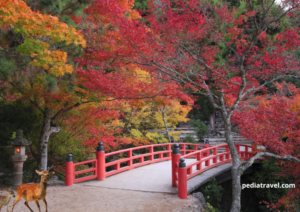
- Senjokaku and the five-storied pagoda
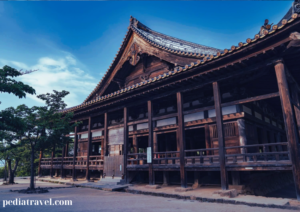
- Daisho-in Temple
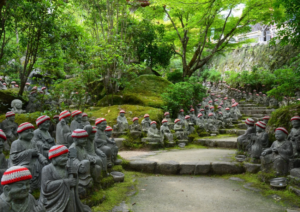
- Mount Misen
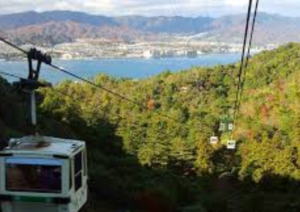
- Miyajima Aquarium
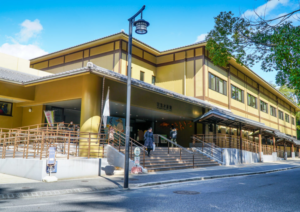
- Miyajima History and Folklore Museum
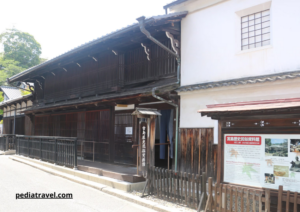
- Itsukushima Shrine
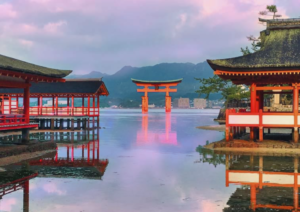
- Miyajima (宮島)

Learn more Japan
- Momijidani Park
- Senjokaku and the five-storied pagoda
- Daisho-in Temple
- Mount Misen
- Miyajima Aquarium
- Miyajima History and Folklore Museum
- Itsukushima Shrine
- Motoise Kono Shrine
- Chionji Temple
- Nariaiji Temple
- The Ine Fishing Village
- Miyajima (宮島)
- Amanohashidate
- Nihon Sankei – Three Most Scenic Places of Japan
- Kanrantei tea house – Matsushima
- Fukuura Island – Matsushima
- Godaido – The symbol of Matsushima
- Oshima Island – Matsushima
- Entsuin Temple – Matsushima
- Zuiganji Temple
- Matsushima Bay
- Matsushima (松島): Uncover Japan’s Coastal Paradise!
- Japanese Festival (Matsuri)
- Ultimate Guide: Budget Travel to Japan – Insider Tips & Tricks!
- Best Cheap Shopping in Tokyo Revealed: Discover Tokyo’s Ultimate Bargain Hotspots!
- Kurashiki A Journey Through Historical Town and Beauty
- Exploring Japanese Tea Ceremony – A Timeless Tradition
- Cherry Blossom Season Japan-Insider Insights and Mesmerizing Moments Await!
- Cherry Blossoms in Japan: Everything You Need to Know for a Wonderful Trip
- Exploring the Serenity of Ginzan Onsen Japan
- Kinkakuji Temple A Must-Visit Destination in Kyoto
- Dive into Nishiki Market: Uncover Authentic Flavors and Local Secrets!
- Family Trip in Japan: 28 Ideas for Exploring Japan with Kids
- Top 15 Places to Visit in Tokyo A Comprehensive Guide
- 15 Best Japanese Food Must Try A Culinary Journey
- Exploring Tokyo with the Hop On Hop Off Bus: A Comprehensive Guide
- Mt Fuji and Hakone: One Day Trip
- 19 Most Beautiful Places In Japan

